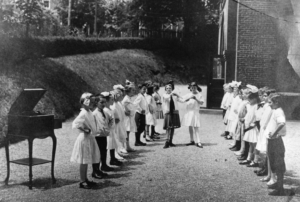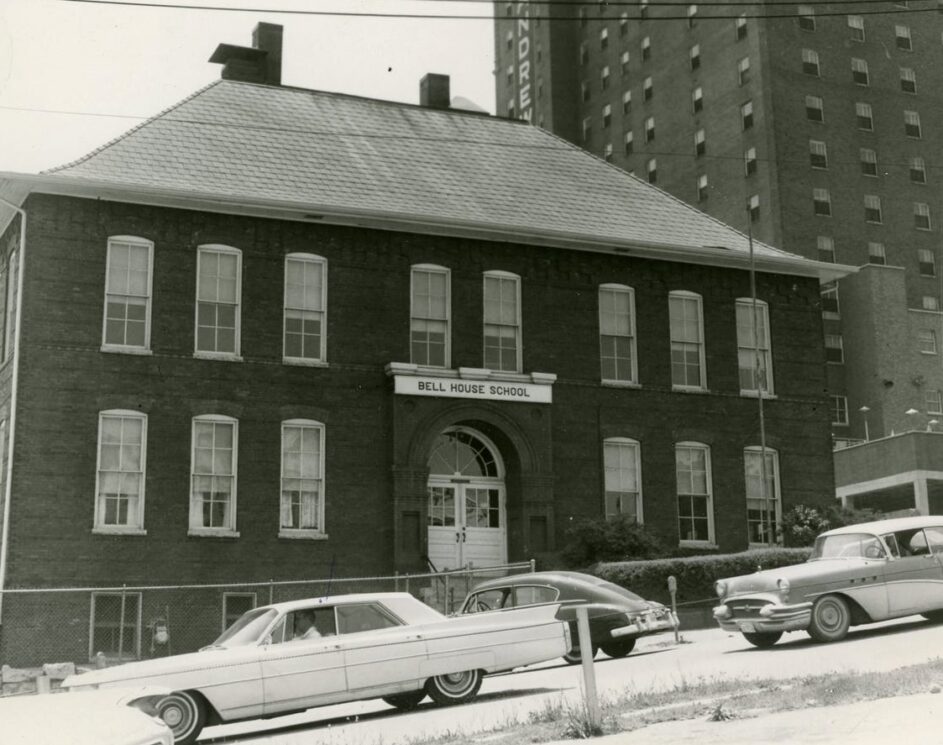One of the great mysteries in Knoxville history is the location of Tennessee’s first state capitol building. In the early days when Knoxville was the capital of the Southwest Territory and then of the new state, many legislative functions were handled at Blount Mansion followed by James White’s Fort in its original location.
But where exactly the governance of the state was handled post the White’s Fort days is a subject of much conjecture and very little certitude. There have been several buildings/locations rumored to be the old state capitol over the last century, the majority of which were determined to be false claims to fame.
However, one possibility was a building that sat across Hill Avenue from Blount Mansion. A Knoxville Journal snippet from January 1950 described it as a log building, 22 feet square and two stories high on the site that became the Andrew Johnson Hotel. The Knoxville Chamber of Commerce was moving to get a commemorative plaque installed, but at the time, wasn’t quite sure where to put it. By the end of the year, the Knoxville City School Board approved its placement on Bell House School.

Fourth grade students listening to a gramophone outside Bell House School in 1913 (Photo Credit: Knox County Two Centuries Photograph Project: C.M. McClung Historical Collection).
There is nothing left of Knoxville first public (as in municipally funded) school. If you go to its former address of 200 Main Street, you will find one giant parking garage (under the Truist Bank building) staring across the road to another (under the First Horizon Bank building). A lot of history turned to dust beneath our city’s only skyscrapers. Whether that capitol building actually sat where the school was or even on the same block is lost to history. But it was commemorated, for 27 years, at Bell House.
The school first opened in 1872 in a building that predated the Civil War (and was used to house Union prisoners when the city was under Confederate control). First known as Bell’s Tavern then later as Bell’s Hotel, it was only logical it would open as a place of learning as Bell House School. By the late 1800s it was determined that a new structure was in order. The old tavern/hotel was taken down and a new, three-story brick school built in its place.
The new school opened in 1898. The mayor at the time, Samuel G. Heiskell, was a great admirer of John Sevier and changed the school’s name to the John Sevier School. This move did not go over well with students and alumni. Heiskell was mayor from 1896 to 1915, second only to Victor Ashe in terms of longevity at the post. Once his tenure was over, the community successfully petitioned for the name to be changed back to Bell House.
The school served many functions over the years. Of course, in its early decades, students attended from first grade until graduation. But by the 1960s, its population was ever dwindling. Fewer people, especially families, were living downtown. Knoxville had grown, more schools built, expanding away from the city center. The first Student Museum was housed there (there was even an indoor Dogwood Trail through it one year), and Knox County Schools paid to use spaces for adult literacy classes. By the late 1960s, the student body was less than 100 pupils. It was closed in 1967 and demolished a decade later.
These days, downtown is zoned for Sequoyah Elementary, Vine Middle and Austin-East Magnet High. If anyone has that plaque, raise your hand.
Beth Kinnane writes a history feature for KnoxTNToday.com. It’s published each Tuesday and is one of our best-read features.
Sources: The Knoxville Journal and Knoxville News-Sentinel digital archives

